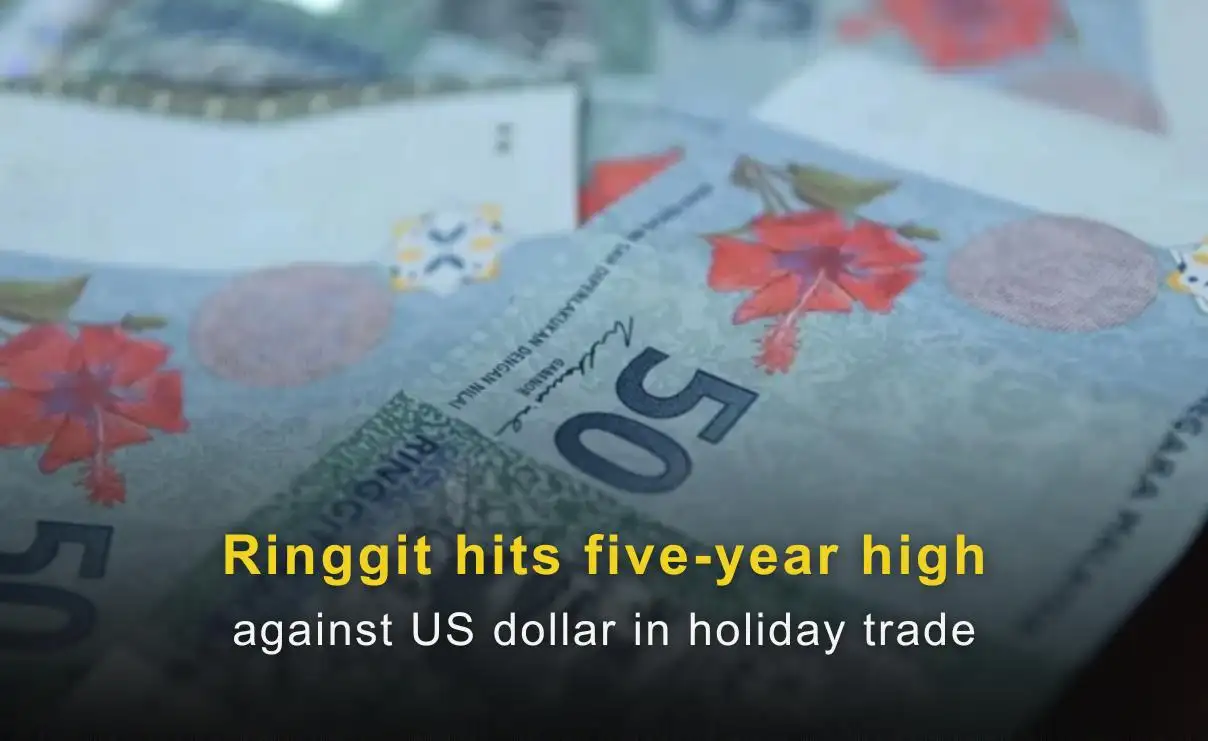What’s ahead in July?
Abstract:Wall Street re-shuffles following Fed’s capitulation. Will the AI hype take a breather with earnings season kicking off on Wall Street?

Wall Street re-shuffles following Feds capitulation. Will the AI hype take a breather with earnings season kicking off on Wall Street?
The Federal Reserve has decided to halt its campaign to raise interest rates as the United States experienced a decline in yearly inflation for 11 consecutive months up to May. This development has prompted Wall Street to initiate a reformation process. Moreover, the treasury yield curve has flattened further and the inversion between short-term and long-term yields has deepened, indicating an unfavorable economic outlook. Nevertheless, the enduring strength of the US economy has reassured investors that an economic recession is not imminent, particularly following the successful stress tests conducted on major US banks. Consequently, Wall Street witnessed a substantial surge on the final trading day, resulting in the three key US benchmark indices continuing their bullish trend in June. Notably, the Dow Jones Industrial Average rose by 4.56%, the S&P 500 by 6.47%, and the Nasdaq by 6.59%.
However, the surge driven by AI technology appears to have temporarily halted prior to the renowned US earnings season, with Nvidia, Microsoft, and Alphabet all experiencing a decline from their peak levels observed over the past several months. Whether the upcoming quarterly tech results can justify their multi-month buying frenzy will be critical for future market trends. According to Factset, the estimated earnings decline for Q2 2023 is -6.8%, the largest earnings decline since Q2 2020 during the pandemic crash. In June, consumer discretionary withstood the top performance, led by Tesla, up more than 28% for the month as the EV maker is expected to dominate the market with both Ford and GM adapting their changing stations to Tesla‘s Supercharger. A notable trend is that the other growth sectors, including technology and communications services, lost their shine. At the same time, material and industrials took the leading positions, mirroring a rebound in commodity prices amid a softened USD and recent resilient us economic front. The US second-quarter earnings will kick off with big banks, which shares rebounded sharply in the last few days amid stress test results. A comeback in cyclical sectors may point to Dow’s outperformance over Nasdaq in July, but company earnings results will still be the price movers.
It will be a busy month crowded with Fed decisions, economic data, and earnings season. While inflation is not likely to cool down the Feds target level, a 25-basis point rate hike is expected. But the market trajectory will be dependent on equity valuations and economic development. CPI, non-far payroll, manufacturing PMI, and retail sales will remain focused.
ASX takes a rebounding tailwind of miner stocks as commodity prices come back
Australian markets saw a bounce in mining stocks as a softened US dollar and China‘s rate cuts fuelled the rally in the industrial metal and energy prices. BHP rose about 5%, Fortescue Metal jumped 14%, and Whitehaven Coal advanced 15%. The benchmark index, the ASX 200, finished 1.6% for the month as material and energy stocks’ gains were offset by healthcare, dragged by CSL, down 9.6% for the month due to weaker-than-expected earnings forecast for FY24. The banking stocks also reversed losses from the prior months following Wall Streets movement.
In the new month, China‘s economic rebound will remain the key factor impacting commodity prices and steer mining stocks’ movements. The Chinese government is expected to impose further fiscal stimulus policies to aid the economy, which may, in turn, buoy the Australian markets.
Domestically, the monthly inflation for May declined to 5.8%, a sharp decline from 6.8% in the prior month, but still well below the 2% target, strengthening the odds for the RBA to give up its rate hike plan in July, which sent the Australian dollar to a one month low against the USD. However, the bank is usually not predictable and not as transparent as other central banks. Hence any hawkish actions could slash market sentiment again.
Chinese stock markets stabilized following PBOCs rate cuts. Will the economic front be convincing enough for a sustainable rebound?
The Chinese stock markets eased losses after the government signalled more stimulus measures to be taken to aid the economic rebound. The Hang Seng Index rose 3.7%, and the CSI 300 was up 1.2% for the month. Notably, the Chinese EV stocks outperformed due to increasing demands and government subsidies to the sector. Xpeng rose 63%, Nio was up 31%, and BYD climbed 7% during the month on the Hong Kong Stock Exchange. While a slew of rate cuts by the POBC somewhat lifted sentiment, the degree of the cuts is not enough to sustain the market rally unless the Chinese government does more to revitalize the sluggish consumer demands. The recent economic data, including international trade, industrial outputs, and manufacturing PMIs, all painted the concerning economic landscape. The second half of the year may see better development if Chinese banks inject more liquidity into the economy. We will continue monitoring key data, such as CPI, New Yuan loans, and Chinas second-quarter GDP growth in July.
The New Zealand dollar swung back from a month high, with the country entering a technical, economic recession
After a two-consecutive negative quarterly growth, New Zealand is officially in a technical, economic recession. A weakened New Zealand dollar and a negative monthly performance on its local stock markets painted a gloomy economic picture for the country. The NZX 50 fell slightly for the month, underperforming the global market as hefty inflation remained an issue for the economy, with the recent Auckland floods adding to the upside pressure on the cost of living. RBNZ‘s front-loading rate hikes effectively slashed the economic growth, though the central bank signalled a pause in the hiking cycle in the next meeting. RBNZ’s rate decision and the second quarter CPI will be in the spotlight in July.
The oil market is at stake amid a Hawkish Fed and Chinas faltering economic rebound
Oil prices swung and finished flat for the month as OPEC+‘s plan to further cut outputs did not offer a sustainable rebound in the crude oil market as hawkish central banks and China’s uneven economic development intensified recession fears. In June, Saudi Arabia decided to cut production by another million to 9 million barrels a day. The OPEC kingpin sees oil demand in China and India to hit 2 million barrels per day this year. The organization previously cut output by 1.16 million barrels per day (bpd) in April, following a 2 million bpd cut that was announced by the end of 2022. The total production cut now reached about 4.5 million bpd. Considering OPEC+ provides about 40% of the global crude, oil prices could be consolidating if China offers policy optimism.
Is there a chance for gold to regain ground?
Gold fell for the second straight month from its all-time high as the US bond yields climbed following the Fed‘s guidance of higher-for-longer rates. Gold could be pressured further since recession risks abated amid the recent resilient US economic data. However, Fed’s rate decision will remain a pivotal event for the gold movement.
Bitcoin soared on signals of regulatory greenlight
Crypto markets were on fire after the largest asset manager, BlackRock filed a spot Bitcoin EFT application to the US SEC. Bitcoin soared more than 20% in June, reaching the highest level since June 2022. The cryptocurrency mark lacks fundamental elements for its valuation, hence technical strategy is one of the key factors that move these digital assets. From a technical perspective, the head-and-shoulder bottom may continue to support bullish bias in the largest cryptocurrency, Bitcoin.

Read more

Hong Kong Regulator Warns Against CoinCola
Hong Kong’s financial watchdog, the Securities and Futures Commission (SFC), has issued a public warning against CoinCola, adding the platform to its Alert List of suspicious virtual asset trading platforms (VATPs). According to the SFC, CoinCola operates through the website and is suspected of conducting unlicensed virtual asset activities while appearing to target or operate in Hong Kong.

Ringgit hits five-year high against US dollar in holiday trade
The Malaysian ringgit extended its rally, reaching a five-year high against the US dollar, trading in a narrow range of RM4.04-RM4.05.

Inside the Elite Committee: Talk with Narinpat Sittivongseth
WikiFX has launched the “Inside the Elite” Interview Series, featuring outstanding members of the newly formed Elite Committee. During the committee’s first offline gathering in Dubai, we conducted exclusive interviews and gained deeper insights into regional market dynamics and industry developments. Through this series, WikiFX aims to highlight the voices of professionals who are shaping the future of forex trading — from education and compliance to risk control, technology, and trader empowerment.

【WikiEXPO Global Expert Interviews】Robert Hahm: From Asset Management to AI Innovation
As WikiEXPO Dubai concludes successfully, we had the pleasure of interviewing Robert Hahm, the Founder and CEO of Algorada. Robert Hahm is a seasoned financial executive who has successfully transitioned from managing traditional assets to founding a cutting-edge fintech platform. As the Founder and CEO of Algorada, he leverages decades of experience in portfolio management to bridge the gap between financial domain knowledge and the power of AI.
WikiFX Broker
Latest News
Spring Rally in Chinese Equities Signals Potential Lift for AUS and NZD
China’s Export Resilience: A Structural Pivot Towards the 'Global South'
Silver Smashes $70: Is the "Forced Central Bank Buying" Thesis Playing Out?
Biggest 2025 FX surprise: USD/JPY
NFA Charges Japan’s Forex Wizard and Mitsuaki Kataoka With Delaying Withdrawal Requests
Why Your Entries Are Always Late (And How to Fix It)
【WikiEXPO Global Expert Interviews】Robert Hahm: From Asset Management to AI Innovation
Treasury vs. Fed: Bessent leads Trump's Campaign to Reshape US Monetary Policy
Ceasefire on the Brink: 14 Nations Condemn Israel as Geopolitical Risk Premiums Rise
Ringgit hits five-year high against US dollar in holiday trade
Rate Calc


